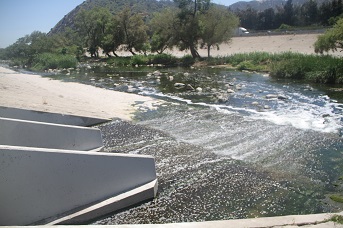Study examining how to restore L.A. River as flows reduced

SCCWRP and its partners have launched an investigation into how to optimally restore aquatic ecosystems along the Los Angeles River in the face of anticipated reductions in the river’s flows in the coming years.
The work, which kicked off in August, will use computer modeling tools developed earlier this year to predict how the river’s ecological functioning and recreational opportunities will be affected as water-quality managers divert more of their runoff and wastewater effluent discharges from the urban river for water-recycling purposes.
SCCWRP worked with more than 50 L.A. River management stakeholders to agree upon a scientific process for evaluating if and how the effluent-dominated L.A. River’s flows can be reduced for water-recycling purposes while simultaneously protecting the ecological and recreational benefits provided by these flows.
Researchers’ goal is to offer recommendations on how to restore the river in a manner that promotes optimal ecological functioning and enhanced recreational opportunities. Among the restoration options being considered under the L.A. River Revitalization Master Plan are low-flow channel modifications, substrate modifications, introduction of pseudo-floodplains and enhanced shading.
More news related to: Ecohydrology